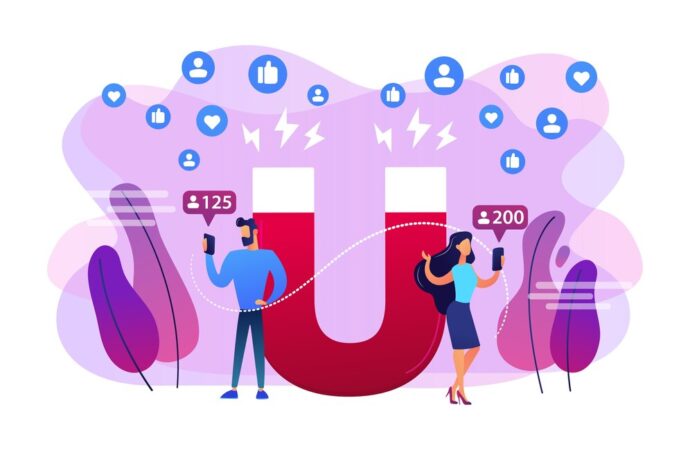As a B2B marketer, you might wonder which is better. Inbound or outbound marketing? The main difference between indoor and outbound marketing is that inbound is cheaper, produces higher quality B2B leads and enhances return on investment. But is this true for all types of marketing? In this post, we will look deeper into inbound
As a B2B marketer, you might wonder which is better. Inbound or outbound marketing?
The main difference between indoor and outbound marketing is that inbound is cheaper, produces higher quality B2B leads and enhances return on investment.
But is this true for all types of marketing?
In this post, we will look deeper into inbound vs. outbound marketing. So, start scrolling to learn about the differences, benefits, and challenges.
What is Inbound Marketing?
Inbound marketing is a strategy that aims to attract potential customers to your business by providing valuable content and experiences that address their needs and interests.
According to research, up to 63% of consumers start shopping online, highlighting the importance of having a solid online presence and utilizing inbound marketing tactics. When people start their shopping journey online, they often begin by searching for information related to their needs, problems, or interests. This means that your content should focus on addressing these needs and interests by providing valuable and relevant information
There are many different types of content that you can create as part of your inbound marketing strategy, including blogs, video content, guidebooks, social media posts, podcasts, and more. Each content type can help you differentiate your products or services from the competition by showcasing your unique value proposition and highlighting what sets you apart.
Remember that prospective customers will be at different stages of their buying journey. You should provide thoughtful content at various points.
Benefits of Inbound Marketing
To help you determine if its the right choice for your company, here are some benefits of inbound Marketing:
Inbound Marketing Is Non-invasive:
It allows prospects to engage with your brand and consume your content on their own time and at their own pace.
Inbound Marketing Content Is Educational:
It is designed to address potential customers’ specific needs and interests at each stage of the sales funnel.
Inbound Marketing Is Quantifiable:
It allows you to tie each part of your strategy to a metric that can be monitored over time.
Inbound marketing is an ongoing process involving creating and distributing valuable content and resources to attract, engage, and retain potential customers.
Challenges of Inbound Marketing
While inbound marketing can be a powerful strategy for many businesses, it is not the right fit for every company. There are some potential drawbacks to focusing solely on digital content for your marketing efforts.
Requires Continuous Maintenance:
It requires continuous maintenance and updates to ensure your content remains relevant and resonates with your target audience.
The Process Is Time-Consuming:
Developing and testing different content that will entice customers to convert can take a lot of time and effort.
Demands a Holistic Strategy:
It demands various tools and tactics to implement integrated, cross-channel campaigns.
What is Outbound Marketing?
Outbound marketing is a strategy where you send a message to a large group of people hoping to make a sale. This strategy is based on the idea that the more people you reach, the larger the return.
Outbound marketing is often associated with traditional marketing, including direct mail, events, billboards, cold calling, radio, TV, newspapers, etc.
However, outbound marketing can also be applied to modern technology, such as pay-per-click (PPC) advertising and email marketing.
Outbound marketing aims to reach as many people as possible and create awareness about a product or service, even if the target audience is not actively seeking it out.
Benefits of Outbound Marketing
A few perks of outbound marketing that shouldn’t be ignored are:
Promotes Brand Awareness:
It can promote brand awareness by reaching people who may not have heard of your products or services.
Can Yield Immediate Results:
You can reach individuals who are already interested in your products or services and are more likely to take action on your ads and make a purchase.
Is Something Consumers Are Used To:
Consumers may be more likely to trust advertisements they see in traditional media, such as TV or print because they are familiar with those channels.
Challenges of Outbound Marketing
Outbound marketing can be difficult to get right. Here are some challenges of going along this route:
Outbound Marketing Is More Generalised:
Making outbound marketing highly targeted and relevant to each recipient can be challenging.
Consumers Easily Tune Out Outbound Marketing:
Consumers may fast-forward through TV commercials using a DVR or mute the TV during commercial breaks. Alternatively, they may immediately delete or discard unsolicited email messages or direct mail pieces.
Measuring the Effectiveness Is Harder:
Measuring the effectiveness of outbound marketing strategies like billboards or print ads can be challenging, as tracking exactly how many people are seeing or engaging with those ads can be difficult.
Outbound Marketing Is Costly:
It can be costly, as it often involves paying for advertising space or attending events and conferences.
Difference Between Inbound and Outbound Marketing
The critical difference between Inbound and Outbound marketing is the approach to reaching potential customers.
Outbound marketing involves proactively contacting consumers to interest them in a product or service. In contrast, inbound marketing focuses on creating valuable content that attracts potential customers to your website.
Outbound marketing is typically more aggressive and wide-sweeping, aiming to reach as many people as possible and convert a portion of them into customers. Inbound marketing is usually more subtle and focuses on attracting a specific group of individuals who are already interested in your brand or product and convincing them to purchase over time.
A quick glance at some other differences:
| Inbound Marketing | Outbound Marketing |
| Pulls in interested audiences | Pushes messaging at wider audience |
| Solve consumer needs | Written to sell products |
| Interactive with audience | One-way communication |
| Fits naturally with user experience | Disrupts user experience |
Finding The Right Marketing Strategy For you
Your business’s most effective marketing strategy will depend on various factors, including your target audience, industry, budget, and goals. Inbound and outbound marketing has pros and cons, and it’s essential to consider each approach in the context of your specific business and marketing objectives.


















Leave a Comment
Your email address will not be published. Required fields are marked with *